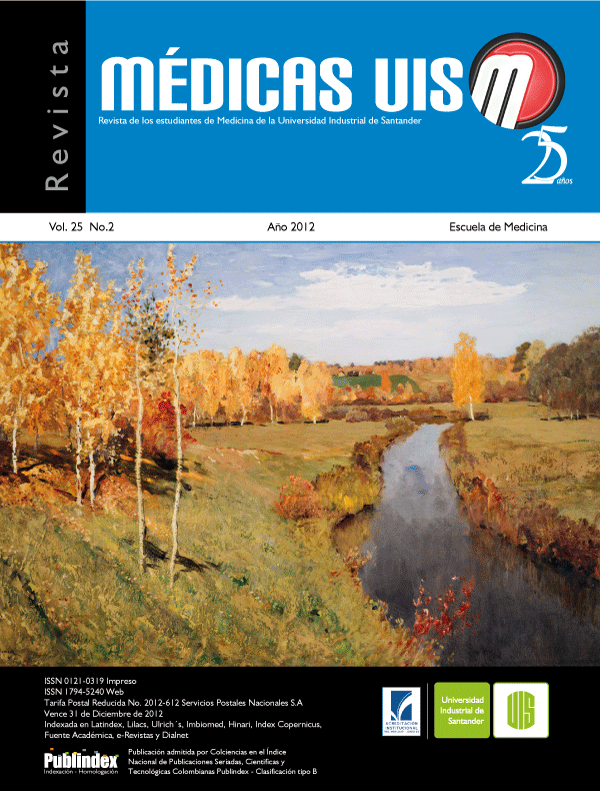Resumen
Como grupo poblacional, los ancianos sufren una mayor cantidad de enfermedades que las personas jóvenes, por lo que consumen significativamente más medicamentos. Un estudio hecho en los Estados Unidos de América, indica que aproximadamente el 77% de las personas de 65 años y más toman al menos un medicamento y aunque representan solo el 12% de la población, consumen aproximadamente
el 30% de todos los que se venden. En promedio el número de medicamentos que dicha población recibe al mismo tiempo varían entre 1,5 y 4,2. Además de ser costoso, el uso múltiple representa un riesgo clínico importante que combinado con los cambios fisiológicos relacionados con la edad, aumentan la probabilidad de efectos adversos. En el presente estudio se describe el patrón de consumo de medicamentos basado en trabajos previos realizados en ancianos mexicanos, así como su comparación con estudios llevados a cabo en poblaciones de otros países. Se encontró que los medicamentos que más se prescriben son los dirigidos al sistema cardiovascular, al sistema nervioso central y los analgésicos anti-inflamatorios. Sin embargo se coincide en que es necesario establecer políticas de salud dirigidas a favorecer un mejor uso de medicamentos en los ancianos, basados en una correcta indicación del medicamento, evaluar el cumplimiento y la adherencia al tratamiento y en lo posible evitar la polifarmacia, que aseguren que el uso de fármacos contribuyan a que el paciente mejore y a evitar los riesgos por un mal uso de los medicamentos. (MÉD.UIS. 2012;25(2):129-36)
Referencias
2. Beynon CM. Drug use and ageing: older people do take drugs!.Age and Ageing. 2009;38:8-10.
3. Kendrick R, Bayne JR. Compliance with prescribed medication by elder patients. Can Med Assoc J. 1982;127:961-2.
4. Tapia-Conyer R, Cravioto P, Borges-Yáñez A, De la Rosa B. Consumo de drogas médicas en población de 60 a 65 años en México. Encuesta Nacional de Adicciones. 1993. Salud Pública Mex. 1996;38:458-65.
5. Gidal BE. Drug absorption in the elderly: biopharmaceutical considerationsfor the antiepileptic drugs.Epilepsy Res. 2006; 68 Suppl 1:S65-9.
6. Conil JM, Georges B, Lavit M, Seguin T, Tack I, Samii K, et al. Pharmacokinetics of ceftazidime and cefepime in burn patients: the importance of age and creatinine clearance. Int J ClinPharmacolTher. 2007;45:529-38.
7. Metlay JP. Medication comprehension and safety in older adults.LDI Issue Brief. 2008;14:1-4.
8. Levine MA, Grootendorst P. Proportion of osteoporotic post-menopausal women at increased risk for upper GI adverse events associated with bisphosphonate therapy.Pharmacoepidemiol Drug Saf. 2000;9:367-70.
9. Cassidy N, Lee SK, Donegan CF, Tracey JA. Poisoning in older adults: the experience of the national poisons information centre. Ir Med J. 2008;101:268-70.
10. Haider SI, Johnell K, Weitoft GR, Thorslund M, Fastbom J. The influence of educational level on polypharmacy and inappropriate drug use: a register-based study of more than 600,000 older people. J Am Geriatr Soc. 2009;57:62-9.
11. Staatz CE, Tett SE. Pharmacokinetic considerations relating to tacrolimus dosing in the elderly.Drugs Aging. 2005;22:541-57.
12. Pautex S, Vogt-Ferrier N. Management of chronic pain in older persons. Rev Med Suisse. 2006;2:1629-30
13. Mangoni AA. Cardiovascular drug therapy in elderly patients: specific age-related pharmacokinetic, pharmacodynamic and therapeutic considerations. Drugs Aging. 2005;22:913-41.
14. Arlt S, Lindner R, Rösler A, vonRenteln-Kruse W. Adherence to medication with dementia: predictors and strategies for improvement. Drugs Aging. 2008;25:1033-47.
15. Staskin DR. Overactive bladder in the elderly: a guide to pharmacological management. Drugs Aging. 2005;22:1013-28.
16. Tsuyuki RT, McLean DL, McAlister FA. Management of hypertension in elderly long-term care residents. Can J Cardiol. 2008;24:912-4.
17. Valderrama E, Rodríguez F, Palacios A, Gabarre P, Pérez del Molino J. Consumo de medicamentos en los ancianos: resultados de un estudio poblacional. Rev Esp Salud Pública. 1998;72:209-19.
18. Marin GH, Cañas M, Homar C, Ylarri E, Pena D, Trebuco H. Utilización de medicamentos en ancianos institucionalizados en una ciudad de la provincia de Buenos Aires, Argentina. Lat Am J Pharm. 2010;29:495-503.
19. Bellia V, Battaglia S, Matera MG, Cazzola M. The use of bronchodilators in the treatment of airway obstruction in elderly patients. PulmPharmacolTher. 2006;19:311-9.
20. Weiser ML. Antipsychotics: restraints for the elderly?. Am J Nurs. 2008;108:11.
21. Perucca E, Berlowitz D, Birnbaum A, Cloyd JC, Garrard J, Hanlon JT, et al. Pharmacological and clinical aspects of antiepileptic drug use in the elderly. Epilepsy Res. 2006;68Suppl 1:S49-63.
22. Leppik IE. Epilepsy in the elderly. Rev Neurol Dis. 2004;1Suppl 1:S44-55.
23. Hilleret H, Falconnet C, Le Saint L, Perrenoud JJ, Michel JP, Vogt-Ferrier N.Prescribing psychotropic drugs aged 80 and over. Rev Med Suisse. 2008;4(178):2405-8, 2410-1.
24. Allain H, Bentué-Ferrer D, Polard E, Akwa Y, Patat A. Postural instability and consequent falls and hip fractures associated with use of hypnotics in the elderly: a comparative review.Drugs Aging. 2005;22:749-65.
25. Secretaria de Salud. Encuesta Nacional de Adicciones. Drogas Médicas, Mexico, D.F. Dirección General de Epidemiología , SSA, 1994.
26. Pérez-Guillé G, Camacho-Vieyra A, Toledo-López A, Guillé-Pérez A, Flores-Pérez J. Patterns of drug consumption in relation with the pathologies of elderly Mexican subjects resident in nursing homes. J Pharm Pharm Sci. 2001;4:159-66.
27. García-Fernández J, González-Pérez C, Sánchez MM, Sánchez-Baragaño M, Vega JB, Méndez-Rodríguez M. Consumo de fármacos psicotrópicos en los ancianos. Rev Sanid Hig Pública. 1994;68:303-10.
28. Ginsberg G, Hattis D, Russ A, Sonawane B. Pharmacokinetic and pharmacodynamic factors that can affect sensibility to neurotoxic sequelae in elderly individuals. Environ Health Perspect. 2005;113:1243-9.
29. Barni S, Cabiddu M, Petrelli F. Toxicity of targeted therapies in elderly patients. Expert Rev Anticancer Ther. 2008;8:1965-76.
30. Doucet J. Use of antidiabetic drugs in elderly patients. Diabetes Metab. 2005;
31 Spec No 2:5S98-5S104. 31. Wasil T, Lichtman SM. Clinical pharmacology issues relevant to the dosing and toxicity o chemotherapy drugs in the elderly.Oncologist. 2005;10:602-12.
32. Chaggar PS, Channer KS. Current issues in thromboprophylaxis. Drugs Aging. 2008;25:1049-60.
33. Brabant T, Stichtenoth D. Pharmacological treatment of osteoarthritis in the elderly. Z Rheumatol. 2005;64:467-72.
